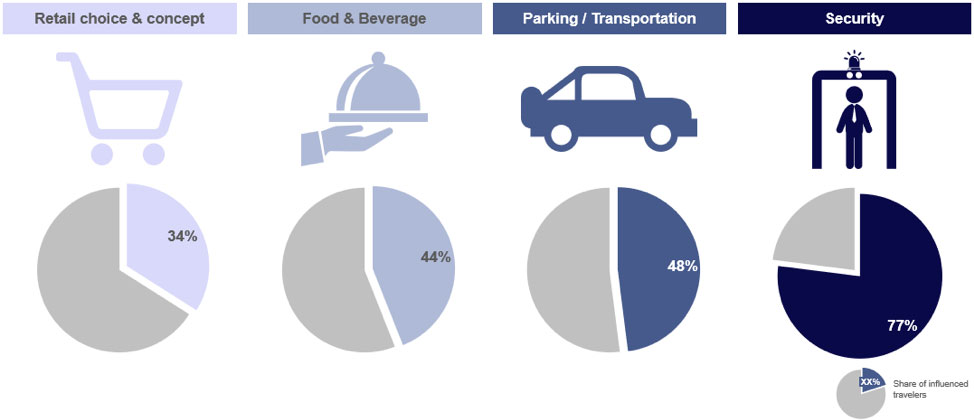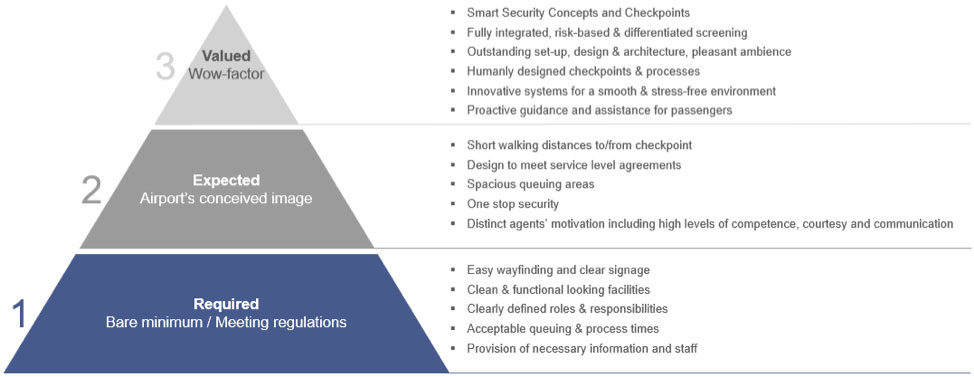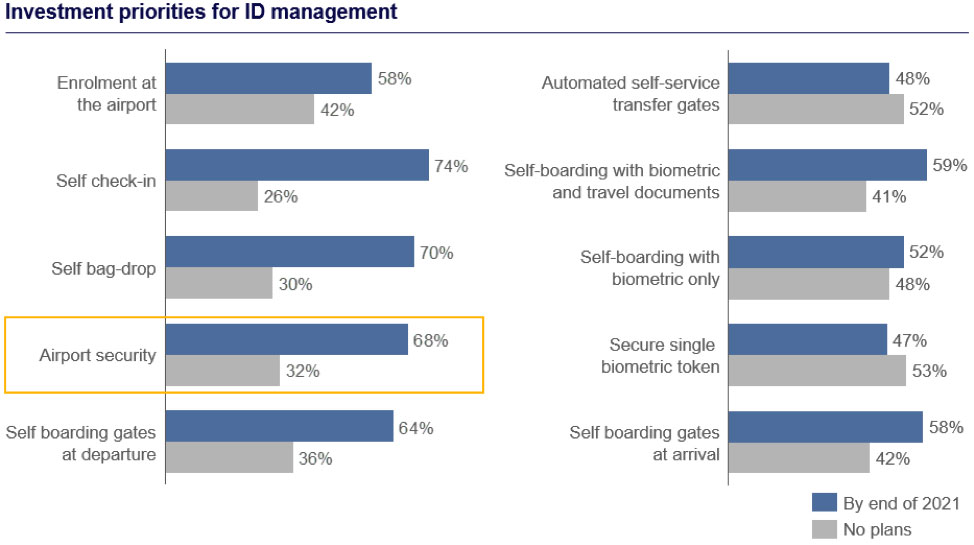By the end of 2021, airports will increasingly use state-of-the-art security concepts and technologies such as biometric ID management to make their passengers’ travel journey and experience more and more seamless, predicts consultant Martin Neuser of Lufthansa Consulting.
Airport operators and managing bodies will continue to operate on thin margins, and often capped aeronautical revenues will not cover operating and capital costs.
The non-aeronautical spend per passenger, which is directly related to the passenger experience, will eventually provide airports with the capital needed to fund investments. In point of fact, an improvement of 1% in passenger experience translates into an increase of 1.5% in non-aeronautical revenues, according to ACI.
The experience of ever more informed, self-determined and empowered passengers will in future be increasingly steered by airports in a proactive manner.
Airport security is the one major bottleneck and touchpoint with the power to affect passengers the most. Improvements in this regard will continue to play the most significant role in making everyone’s travel journey more convenient, seamless and enjoyable. According to research conducted by ICLP (since rebranded as Collinson) in 2016, efficient security has the power to positively influence 77% of travelers.

Figure 1. Airport influencing factors
Source: Illustration by Lufthansa Consulting, (Morgan, 2016, para. 2-4)
In the years to come, more and more airports will need to respectively shift their priorities and climb the so-called pyramid of passenger perception levels, as shown in figure 2, in an attempt to retain passengers.

Figure 2. Pyramid of perception levels: security
Source: Illustration by Lufthansa Consulting, (ACI Europe)
At the top stage, value is created by smart security concepts and technologies which will become more and more relevant in terms of airports’ investment priorities. As indicated by figure 3, identity management for the sake of airport security is an investment priority, and 68% of all airports plan to have it in place by the end of 2021.

Figure 3. Investment priorities for ID management
Source: Illustration by Lufthansa Consulting, (SITA)
By means of customer ID management and the biometric travel journey, airport operators will increasingly succeed in easing the whole airport experience while significantly reducing stress levels for travelers and airport personnel. Using biometric data at self-service touchpoints and building processes around them is the right path to creating a seamless customer journey. Advanced screening technologies – such as full-body scanners using millimeter-wave imaging frequencies, molecular-laser security scanners and camera surveillance systems equipped with artificial intelligence software – will complement and eventually achieve a frictionless journey.
Given sustainable, future-oriented investment prioritizations and the right partnership incentives, air travelers may easily expect an airport environment that offers a seamless passing from curbside to gate with a minimum of distraction and waiting times. They will thank the airports that get priorities right and will use their recovered dwell time for spending money within on-airport restaurants, retail stores and souvenir shops.
